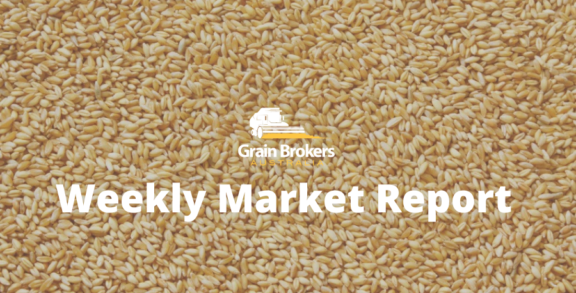Nestled between the Sahel to the north and the Gulf of Guinea to the south, Nigeria has emerged as Africa’s largest economy in the last decade. It has a population fast approaching 220 million, making it Africa’s most populous country with 15 per cent of the continent’s inhabitants, and the world’s sixth most populated nation. The country’s gross domestic product is projected to exceed US$454 billion by the end of 2022, placing it 26th in world rankings.
The West African nation covers an area of 923,769 square kilometres, slightly smaller than the state of South Australia. It has a diverse geography, with climates ranging from arid to humid equatorial. The landscape has often been described as a patchwork of distinctive regions, including deserts, plains, swamps, mountains, and steamy jungles. It shares land borders with Benin to the west, Niger to the north, and Chad and Cameroon to the east.
The humid savannas of the Federal Republic of Nigeria are separated from the arid Sahara Desert by a region known as the Sahel. The semiarid steppes of the Sahel stretch from the Atlantic Ocean eastward through northern Senegal, southern Mauritania, the Great Bend of the Niger River in Mali, Burkina Faso, southern Niger, north-eastern Nigeria, south-central Chad and into Sudan at its western extremity.
Nigeria has the most substantial arable land area in Africa, yet it relies heavily on imports to meet its food and agricultural requirements. The cost of that reliance is currently around US$22 billion per annum, but it is growing rapidly. However, the government still has import restriction policies in place, the objectives of which are to encourage domestic production, the success of which is questionable. Food prices were high before the war in Ukraine, and Putin’s antics have only exacerbated the situation, with food inflation currently running at more than 22 per cent.
Nigeria’s primary food staples, in order of volume consumed, are corn, rice, sorghum and wheat, the domestic production of which vary greatly. Corn is the biggest domestic crop, with production in the 2022/23 season pegged at 12.2 million metric tonne off 5.8 million hectares. This is down from 12.7MMT off 6Mha last season and translates to a yield of just 2.1 metric tonne per hectare, relatively poor by world standards.
The primary corn-producing states are concentrated in the central and northern parts of the country, where increasing regional insecurity continues to obstruct production. Farmers are abandoning their farms and escaping to relatively nonviolent areas in the major cities. In parts of the country’s northwest, farmers are forced to pay ‘taxes’ to armed gangs to access their farms.
Corn demand is forecast at 13MMT, with 10MMT going into human consumption and the balance into stockfeed rations. Much of the population consumes corn meal, especially for breakfast. Made of fermented corn, demand has increased substantially due to the rising price of wheat-based products such as bread and pasta. The primary stockfeed end users are the poultry and aquaculture industries. Corn imports this season are expected to be less than 0.1MMT as the Central Bank of Nigeria forbids banks from issuing foreign exchange approvals to importers.
Rice is Nigeria’s second biggest domestic grain crop, with 7.8MMT of rough production off 3.4Mha. That converts to 4.9MMT of milled production. Again, the rough rice yield of 2.3MT/ha is at the low end of global standards, where Australia sets the pace at an average of more than 10MT/ha. Domestic consumption is pencilled in at 6.9MMT, 5 per cent lower year-on-year as price increases erode consumer purchasing power.
Imports of rice are forecast at 1.5MMT, down from 2.2MMT in 2021/22, as the Central Bank of Nigeria prohibits importers from accessing funds through the Importers and Exporters (I&E) window. This means that importers must utilise the unofficial exchange rate, which is more than 50 per cent higher than the official version. Add in a 60 per cent import duty, and the exercise quickly becomes uneconomical. As a result, much of the imported rice consumed in Nigeria actually enters the country via unmonitored land borders, mainly via Benin to the west.
Sorghum production in Nigeria has been gradually growing in recent years, with production in 2022/23 expected to top 7.2MMT off a harvested area of 5.8Mha. This is up from 6.7MMT in the 2021/22 season and 6.6MMT the season prior. Nigeria will top the list of world sorghum producers this season after a drought-induced crop disaster in the United States reduced production by almost 50 per cent to 6MMT. Sudan is third on that list at 5MMT.
Domestic consumption of sorghum is expected to increase to 7MMT this season, with 6.8MMT going into food, seed and industrial uses and only 0.2MMT going into the stockfeed sector. Consumption has been growing in line with production, up from 6.7MMT and 6.6MMT in the two preceding seasons, leaving a minimal exportable surplus.
Households in Nigeria consume sorghum quite widely. It is popped, boiled, roasted or ground to make flour for pastry and baking uses such as flatbreads, porridge and pancakes. Industrial end users convert the grain into cereals, confectionary and alcoholic beverages such as beer and the very popular local liquor known as burukutu. Sorghum is also a valuable source of food assistance to internally displaced people following years of civil unrest.
Consumption of wheat in Nigeria is expected to be 5.9MMT in 2022/23, but government policies and programs to boost production have been ineffective, leaving production languishing at just 0.1MMT. The programs have failed due to a lack of funding for regular seed production and multiplication, widespread insurgency in the wheat growing areas, poor supply of critical farms input such as fertiliser, and more viable options limiting the area under cultivation.
Wheat imports of 6MMT will be required in 2022/23 to fill the domestic supply and demand imbalance. This is down from 6.2MMT last season and 6.6MMT in 2020/21. With Russia a major supplier, the war in Ukraine, the subsequent sanctions and Black Sea export bottlenecks have limited supply and pushed up prices. Many millers blend Black Sea wheat with superior quality, but more costly imports from the United States, Canada and Australia to produce the dough consistency needed for bread. The high cost of wheat flour is forcing bakeries to explore blending options such as cassava flour, millet flour and sweet potato flour to reduce costs, but dough quality suffers accordingly.
The most recent export data from the Australian Bureau of Statistics reveals a wheat cargo destined for Nigeria was loaded out of Port Adelaide in South Australia in October, the first shipment of wheat to Nigeria since May of last year. Nigeria and Ethiopia are two African nations identified in a recent Australian government report as potential longer-term markets for Australian milling wheat as their population is exploding and production growth is minimal.
Call your local Grain Brokers Australia representative on 1300 946 544 to discuss your grain marketing needs.





